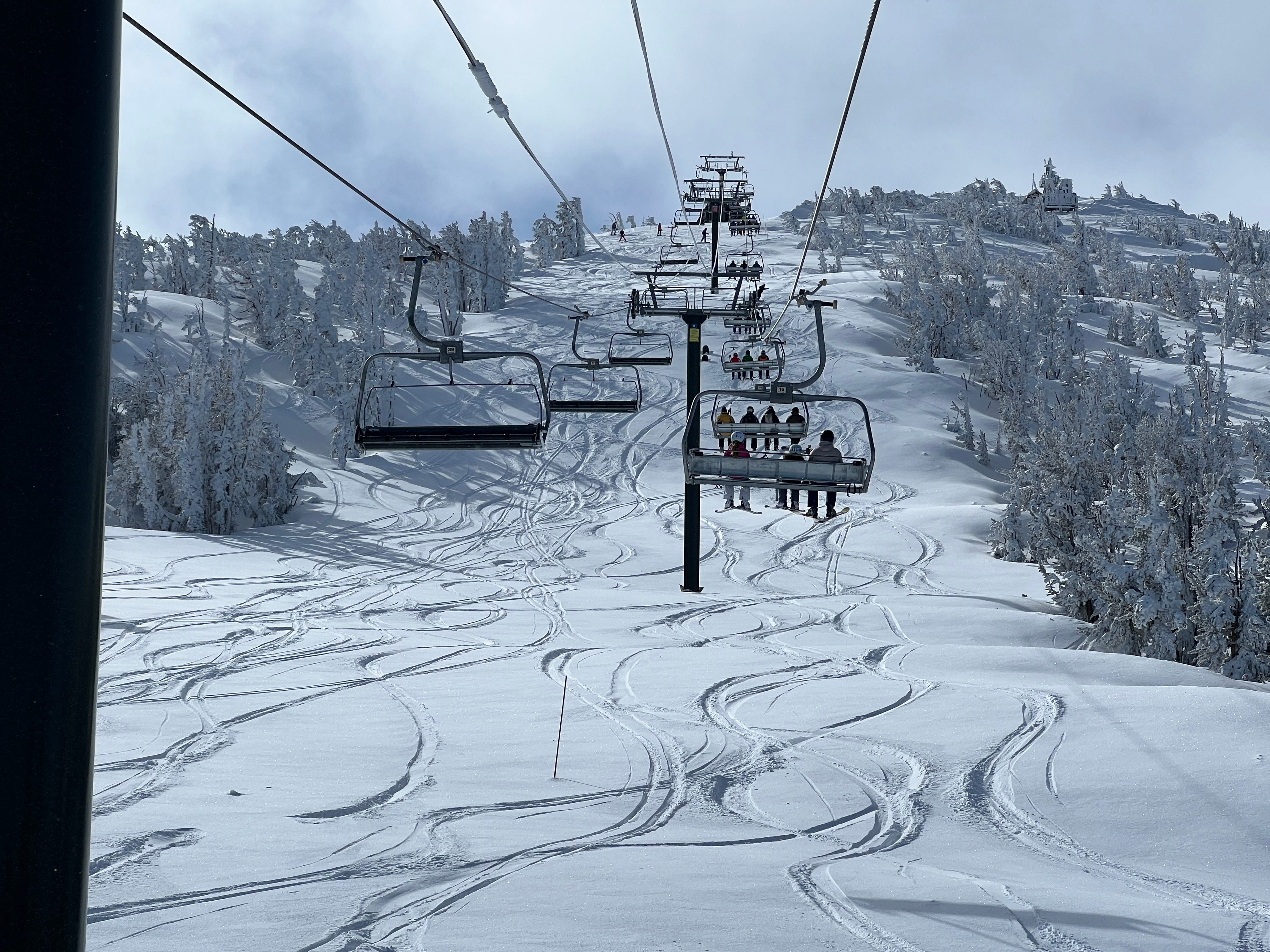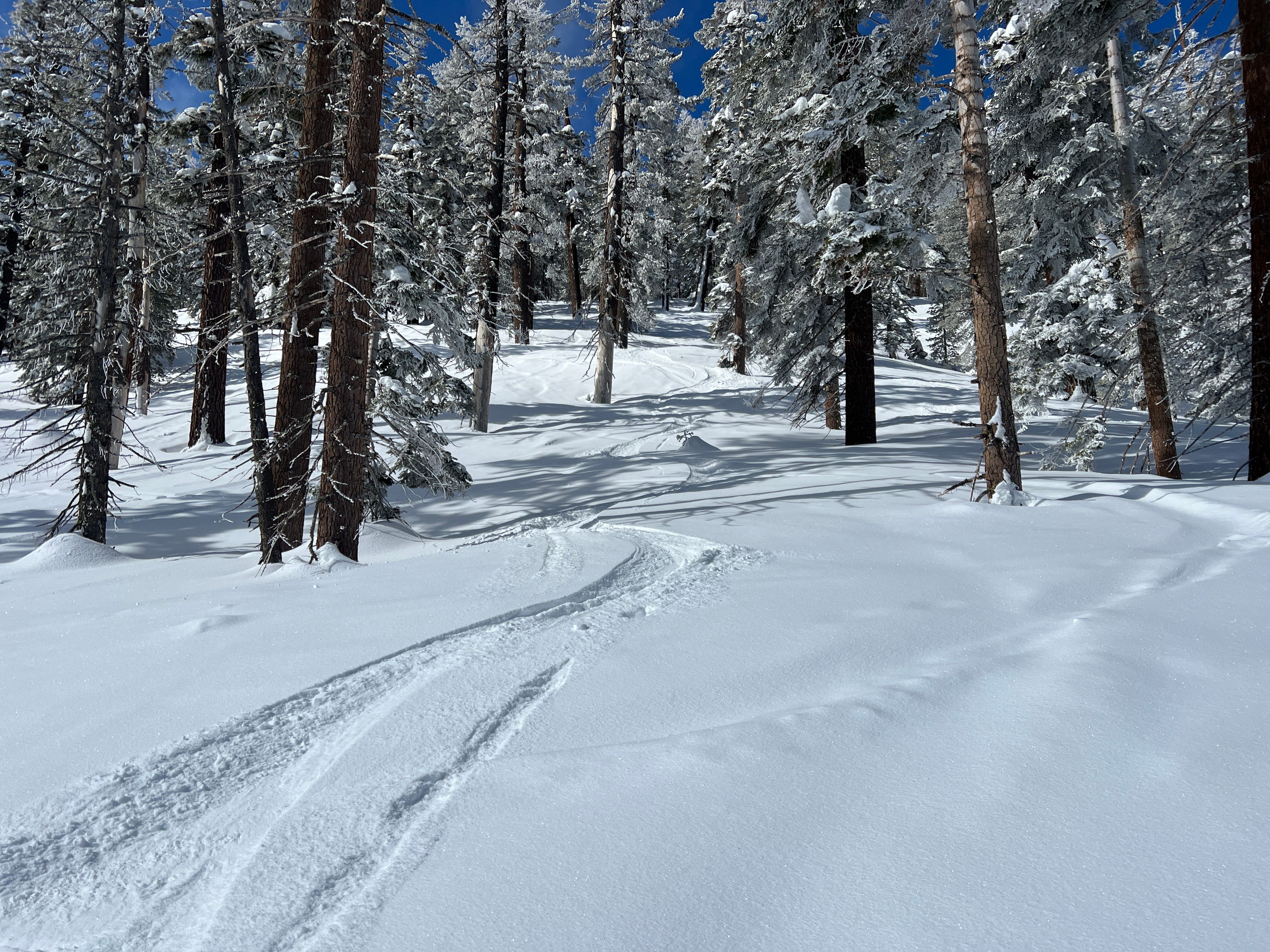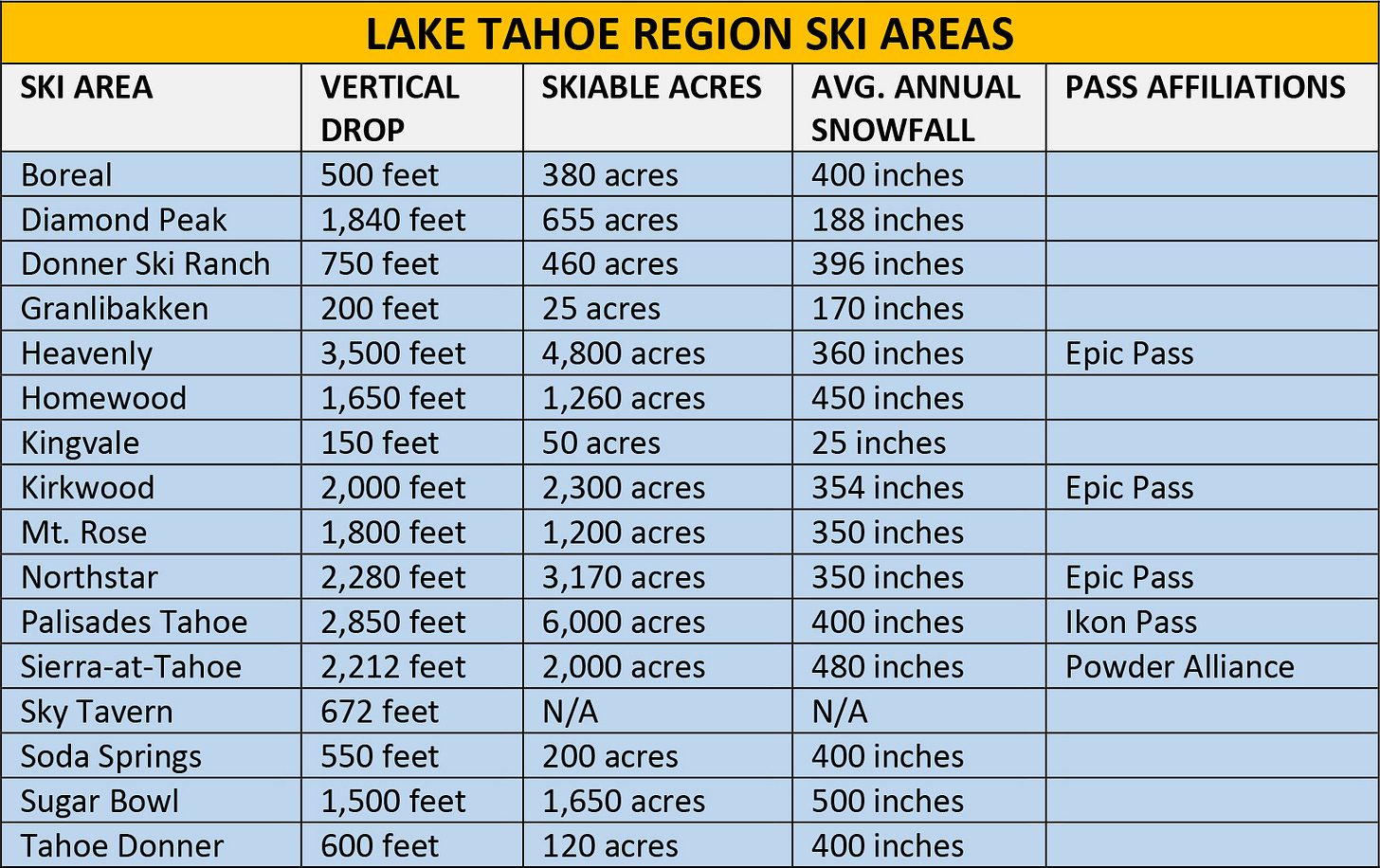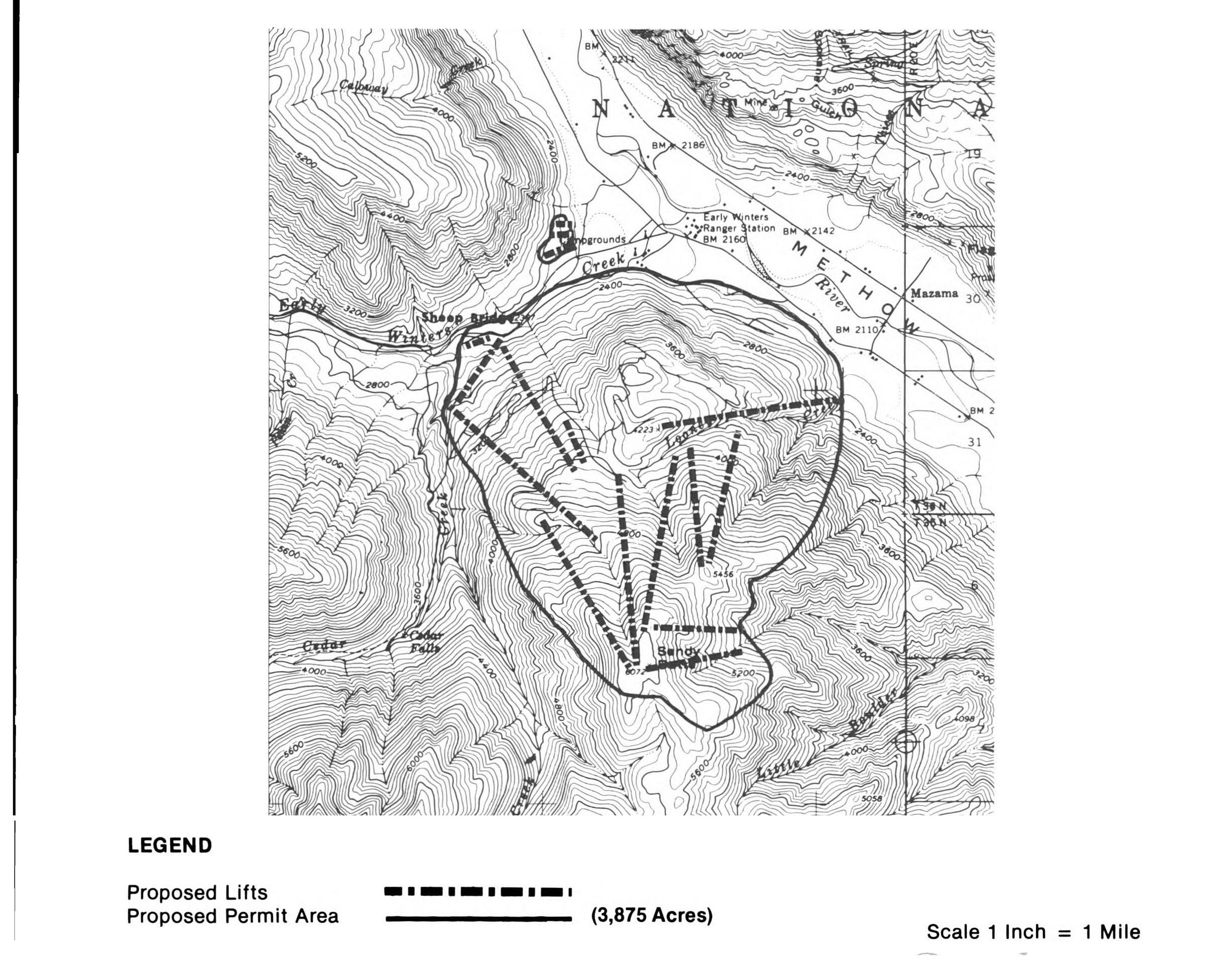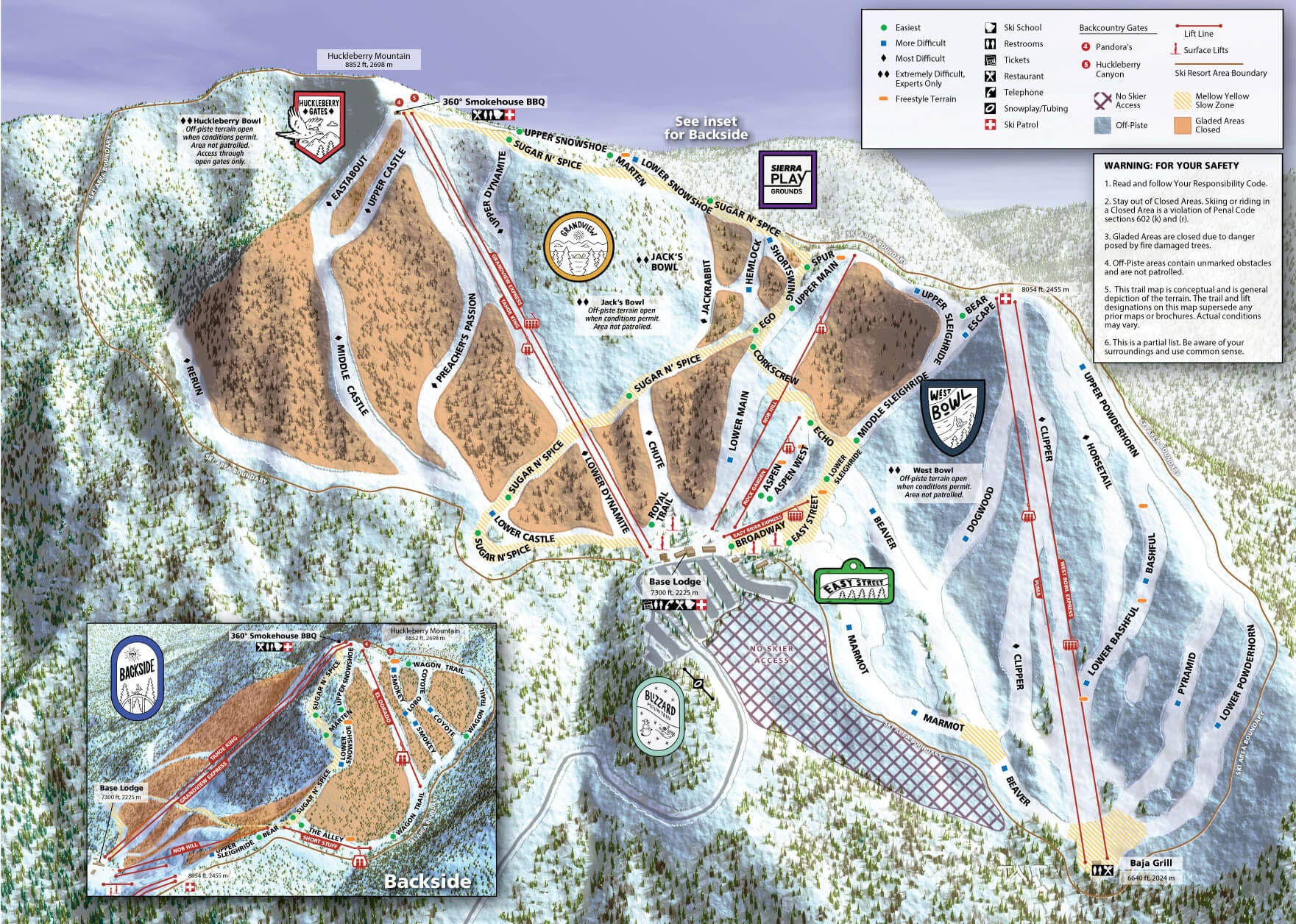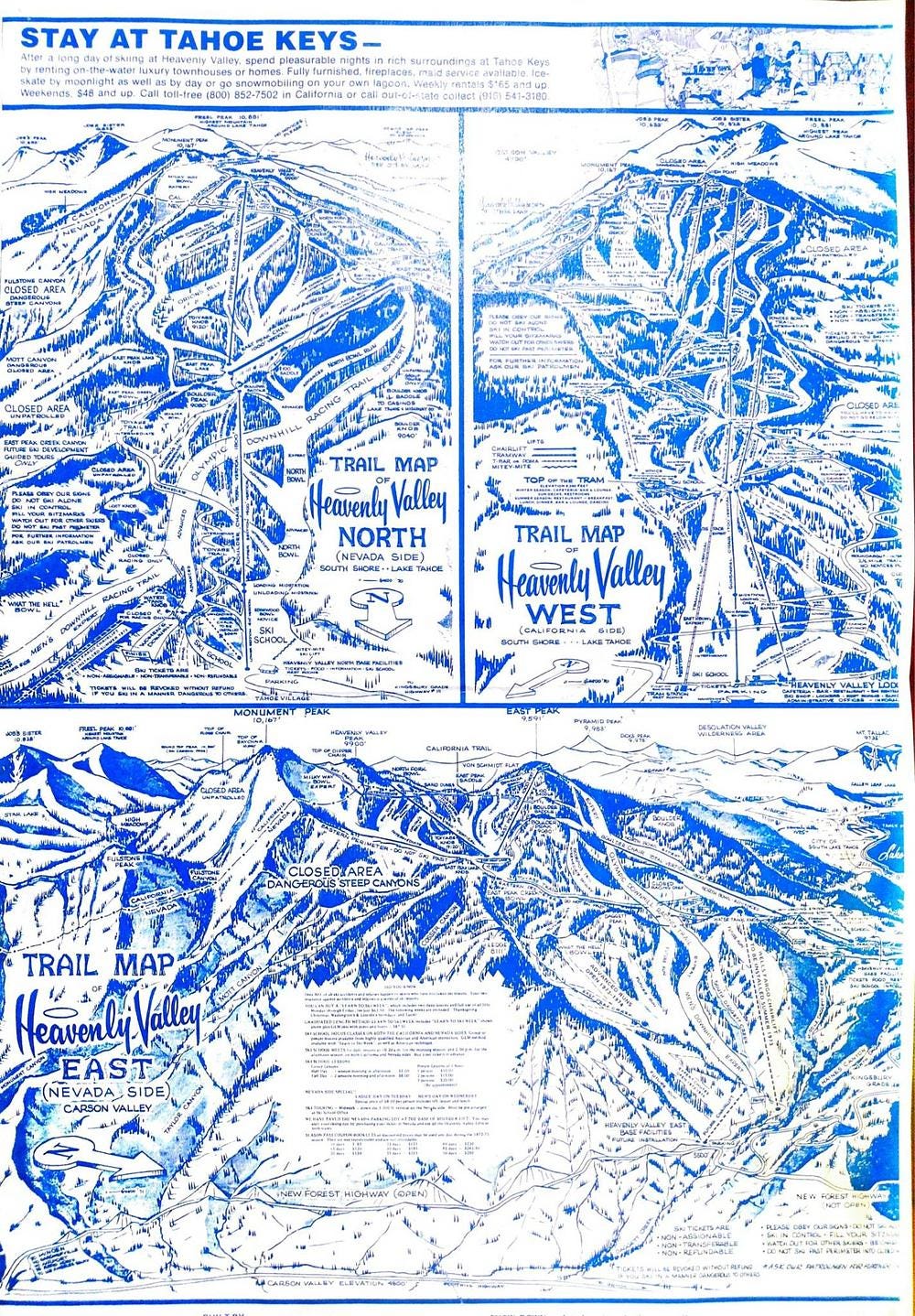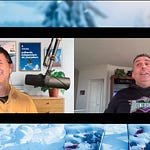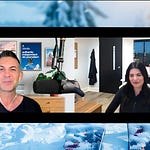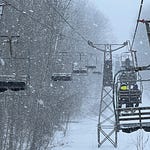Who
Tom Fortune, Vice President and Chief Operating Officer of Heavenly and Vail’s Tahoe Region (Heavenly, Northstar, and Kirkwood)

Recorded on
April 25 , 2023
About Heavenly and Vail’s Tahoe Region
Heavenly
Click here for a mountain stats overview
Owned by: Vail Resorts
Located in: Stateline, Nevada and South Lake Tahoe, California
Year founded: 1955
Pass affiliations: Unlimited access on Epic Pass; Unlimited access with holiday blackouts on Epic Local Pass, Tahoe Local Pass, Tahoe Value Pass
Closest neighboring ski areas: Sierra-at-Tahoe (30 minutes), Diamond Peak (45 minutes), Kirkwood (51 minutes), Mt. Rose (1 hour), Northstar (1 hour), Sky Tavern (1 hour, 5 minutes) - travel times vary dramatically given weather conditions and time of day.
Base elevation: 6,565 feet at California Lodge; the Heavenly Gondola leaves from Heavenly Village at 6,255 feet – when snowpack allows, you can ski all the way to the village, though this is technically backcountry terrain
Summit elevation: 10,040 feet at the top of Sky Express
Vertical drop: 3,475 feet from the summit to California Lodge; 3,785 feet from the summit to Heavenly Village
Skiable Acres: 4,800
Average annual snowfall: 360 inches (570 inches for 2022-23 ski season as of May 2)
Trail count: 97
Lift count: 26 lifts (1 50-passenger tram, 1 eight-passenger gondola, 2 six-packs, 8 high-speed quads, 1 fixed-grip quad, 5 triples, 2 doubles, 2 ropetows, 4 carpets)

Northstar
Click here for a mountain stats overview
Owned by: Vail Resorts
Located in: Truckee, California
Year founded: 1972
Pass affiliations: Unlimited access on Epic Pass; Unlimited access with holiday blackouts on Epic Local Pass, Tahoe Local Pass; unlimited with holiday and Saturday blackouts on Tahoe Value Pass
Closest neighboring ski areas: Tahoe Donner (24 minutes), Boreal (25 minutes), Donner Ski Ranch (27 minutes), Palisades Tahoe (27 minutes), Diamond Peak (27 minutes), Soda Springs (29 minutes), Kingvale (32 minutes), Sugar Bowl (33 minutes), Mt. Rose (34 minutes), Homewood (35 minutes), Sky Tavern (39 minutes), Heavenly (1 hour) - travel times vary dramatically given weather conditions and time of day.
Base elevation: 6,330 feet
Summit elevation: 8,610 feet
Vertical drop: 2,280 feet
Skiable Acres: 3,170
Average annual snowfall: 350 inches (665 inches for 2022-23 ski season as of May 2)
Trail count: 106
Lift count: 19 (1 six-passenger gondola, 1 pulse gondola, 1 chondola with 6-pack chairs & 8-passenger cabins, 1 six-pack, 6 high-speed quads, 1 fixed-grip quad, 2 triples, 1 platter, 5 magic carpets)
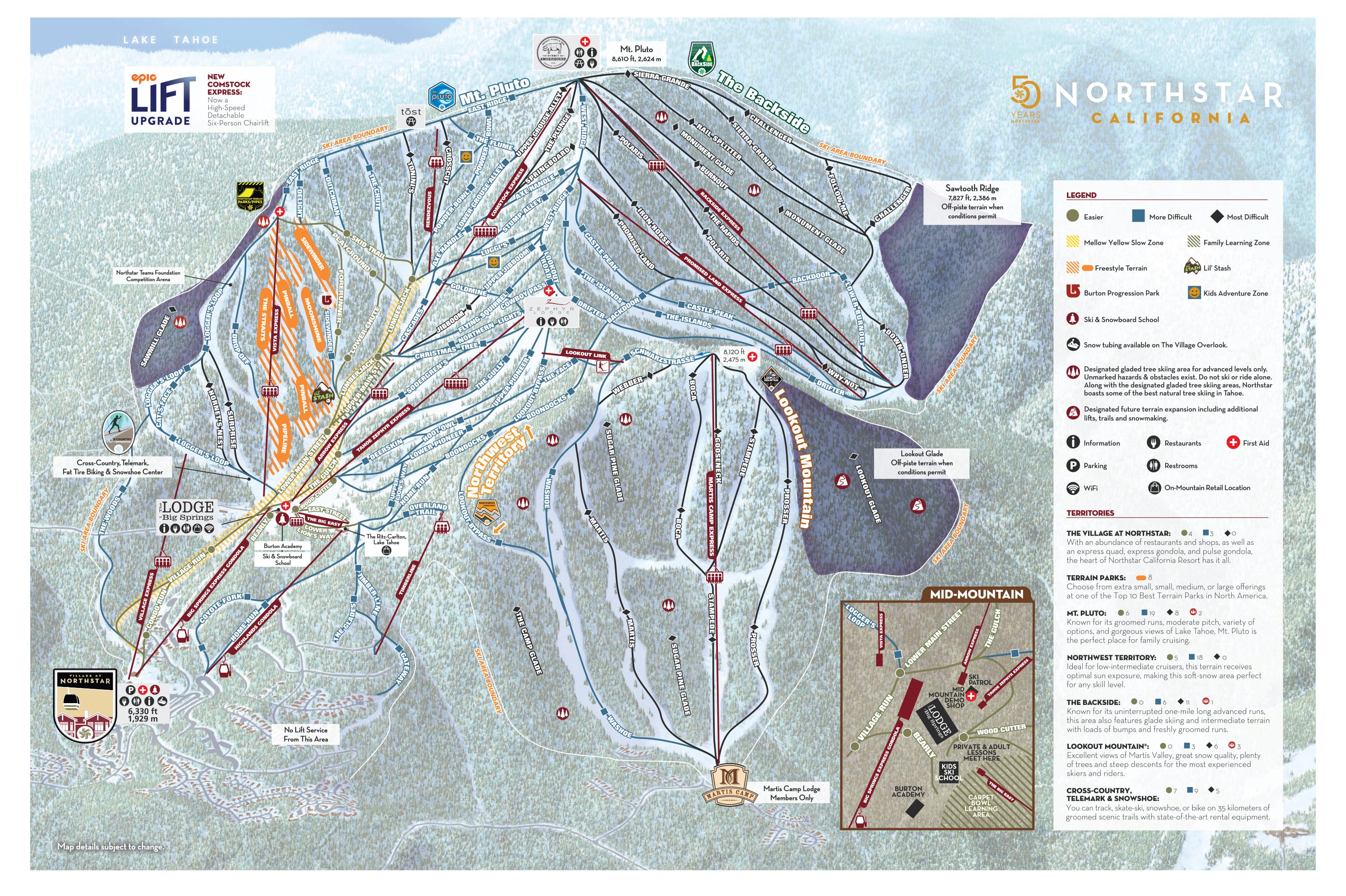
Kirkwood
Click here for a mountain stats overview
Owned by: Vail Resorts
Located in: Kirkwood, California
Year founded: 1972
Pass affiliations: Unlimited access on Epic Pass, Kirkwood Pass; Unlimited access with holiday blackouts on Epic Local Pass, Tahoe Local Pass; unlimited with holiday and Saturday blackouts on Tahoe Value Pass
Closest neighboring ski areas: Sierra-at-Tahoe (48 minutes), Heavenly (48 minutes) - travel times vary dramatically given weather conditions and time of day.
Base elevation: 7,800 feet
Summit elevation: 9,800 feet
Vertical drop: 2,000 feet
Skiable Acres: 2,300
Average annual snowfall: 354 inches (708 inches for 2022-23 ski season as of May 2)
Trail count: 94
Lift count: 13 (2 high-speed quads, 1 fixed-grip quad, 6 triples, 1 double, 1 T-bar, 2 carpets)

Why I interviewed him
For decades, Heavenly was the largest ski area that touched the state of California. By a lot. Four drive-to base areas serving 4,800 acres across two states. Mammoth? Ha! Its name misleads – 3,500 acres, barely bigger than Keystone. To grasp Heavenly’s scale, look again at the new North Bowl lift on the trailmap above. A blip, one red line lost among dozens. Lodged near the base like the beginner lifts we’re all used to ignoring. But that little lift rises almost 1,300 vertical feet over nearly a mile. That’s close to the skiable drop of Sugar Bowl (1,500 feet), itself a major Tahoe ski area. Imagine laying Sugar Bowl’s 1,650 acres over the Heavenly trailmap, then add Sierra-at-Tahoe (2,000 acres) and Mt. Rose (1,200). Now you’re even.

Last year, Palisades Tahoe wrecked the party, stringing a gondola between Alpine Meadows and the resort formerly known as Squaw Valley. They were technically one resort before, but I’m not an adherent of the these-two-ski-areas-are-one-ski-area-because-we-say-so school of marketing. But now the two sides really are united, crafting a 6,000-acre super-resort that demotes Heavenly to second-largest in Tahoe.
Does it really matter? Heavenly is one of the more impressive hunks of interconnected mountain that you’ll ever ski in America. Glance northwest and the lake booms away forever into the horizon. Peer east and there, within reach as your skis touch a 20-foot snowbase, is a tumbling brown forever, the edge of the great American desert that stretches hundreds of miles through Nevada, Utah, and Colorado.
When Vail Resorts raised its periscope above Colorado for the first time two decades ago, Heavenly fell in its sites. The worthy fifth man, an all-star forward to complement the Colorado quad of Vail, Beaver Creek, Keystone, and Breck. That’s not an easy role to fill. It had to be a mountain that was enormous, evolved, transcendent. Someplace that could act as both a draw for variety-seeking Eagle County faithful and an ambassador for the Vail brand as benevolent caretaker. Heavenly, a sort of Vail Mountain West – with its mostly intermediate pitch, multiple faces, and collection of high-speed lifts cranking out of every gully – was perfect, the most logical extra-Colorado manifestation of big-mountain skiing made digestible for the masses.
That’s still what Heavenly is, mostly: a ski resort for everyone. You can get in trouble, sure, in Mott or Killebrew or by underestimating the spiral down Gunbarrel. But this is an intermediate mountain, a cruisers’ mountain. Even the traverses – and there are many – are enjoyable. Those views, man. Set the cruise control and wander forever. For a skier who doesn’t care to be the best skier in the world but who wants to experience some of the best skiing in the world, this is the place.
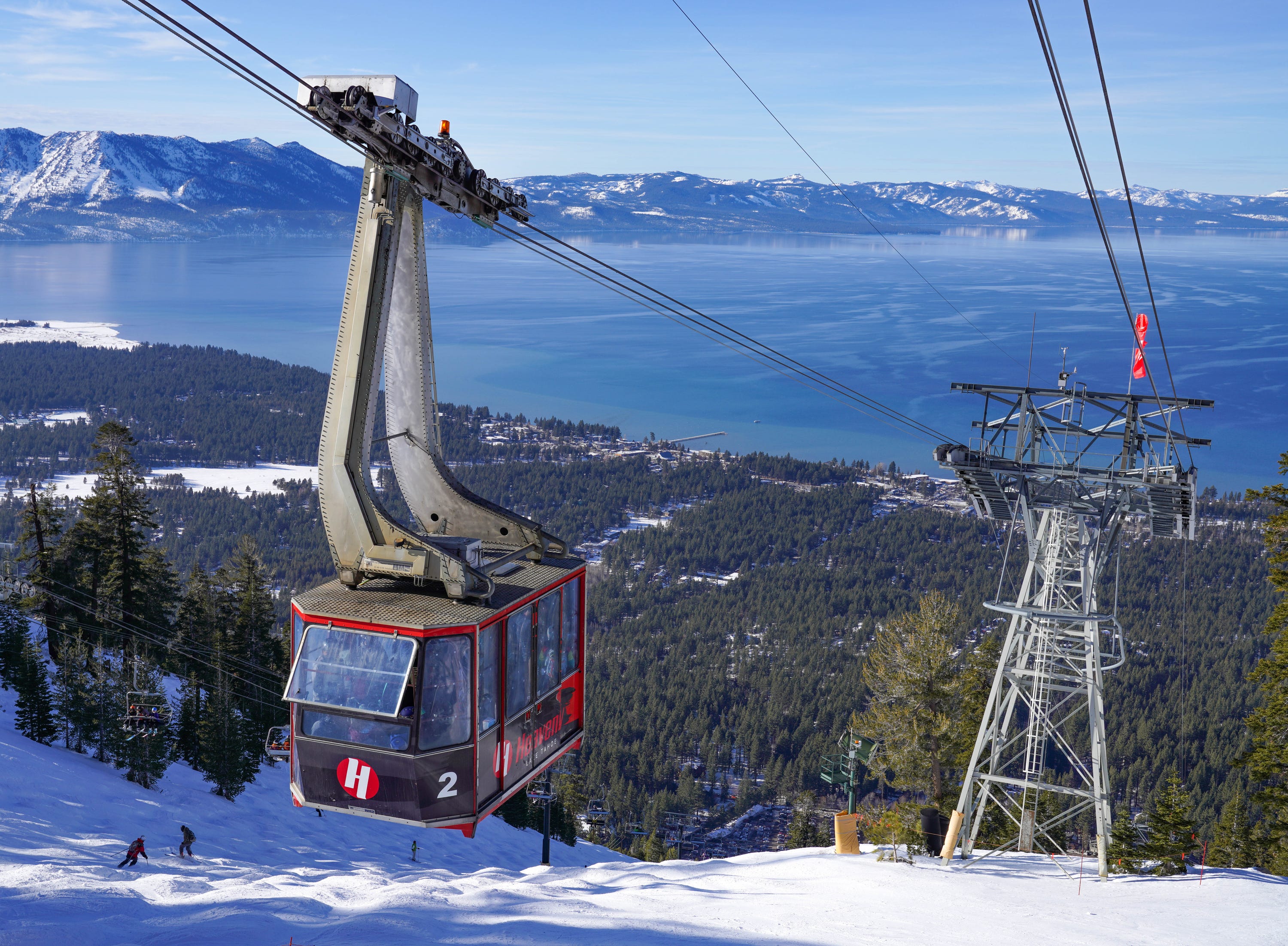
What we talked about
Records smashing all over the floor around Tahoe; why there won’t be more season extensions; Heavenly’s spring-skiing footprint; managing weather-related delays and shutdowns in a social-media age; it’s been a long long winter in Tahoe; growing up skiing the Pacific Northwest; Stevens Pass in the ‘70s; remember when Stevens Pass and Schweitzer had the same owner?; why leaving the thing you love most can be the best thing sometimes; overlooked Idaho; pausing at Snow King; fitting rowdy Kirkwood into the Vail Resorts puzzle; the enormous complexity of Heavenly; what it means to operate in two states; a special assignment at Stevens Pass; stabilizing a resort in chaos; why Heavenly was an early snowmaking adopter; Hugh and Bill Killebrew; on the ground during the Caldor Fire; snowmaking systems as fire-fighting sprinkler systems; fire drills; Sierra-at-Tahoe’s lost season and how Heavenly and Kirkwood helped; wind holds and why they seem to be becoming more frequent; “it can be calm down in the base area and blowing 100 up top”; potential future alternatives to Sky Express as a second lift-served route back to Nevada from California; a lift-upgrade wishlist for Heavenly; how Mott Canyon lift could evolve; potential tram replacement lifts; the immediate impact of the new North Bowl express quad; how Northstar, Kirkwood, and Heavenly work together as a unit; paid parking incoming; and the Epic Pass.
Why I thought that now was a good time for this interview
The first half of my life was dominated by one immutable looming fact: the year 2000 would arrive. That’s how we all referenced it, every time: “the year 2000.” As though it were not just another year but the president of all years. The turning of a millennium. For the first time in a thousand years. It sounded so fantastical, so improbable, so futuristic. As though aliens had set an invasion date and we all knew it but we just didn’t know if they would vaporize us or gift us their live-forever beer recipe. Y2K hysteria added a layer of intrigue and mild thrill. Whatever else happened with your life, wherever you ended up, whoever you turned out to be, this was a party you absolutely could not miss.
This winter in Tahoe was like that. If you had any means of getting there, you had to go. Utah too. But everything is more dramatic in Tahoe. The snows piled Smurf Village-like on rooftops. The incredible blizzards raking across the Sierras. The days-long mountain closures. It was a rare winter, a cold winter, a relentless winter, a record-smashing winter for nearly every ski area ringing the 72-mile lake.
Tahoe may never see a winter like this again in our lifetimes. So how are they dealing with it? They know what to do with snow in Tahoe. But we all know what to do with water until our basement floods. Sometimes a thing you need is a thing you can get too much of.
In March I flew to California, circled the lake, skied with the people running the mountains. Exhaustion, tinted with resignation, reigned. Ski season always sprawls at the top of the Sierras, but this winter – with its relentless atmospheric rivers, the snows high and low, the piles growing back each night like smashed anthills in the driveway – amplified as it went, like an action movie with no comedic breaks or diner-meal interludes. How were they doing now, as April wound down and the snows faded and corn grew on the mountainside? And at the end of what’s been a long three years in Tahoe, with Covid shutdowns leading into a Covid surge leading into wildfires leading into the biggest snows anyone alive has ever seen? There’s hardship in all that, but pride, too, in thriving in spite of it.
What I got wrong
I said that the Kehr’s Riblet double was “one of the oldest lifts in the country.” That’s not accurate. It was built in 1964 – very old for a machine, but not even the oldest lift at the resort. That honor goes to Seventh Heaven, a 1960 Riblet double rising to the summit. And that’s not even the oldest Riblet double in the State of Washington: White Pass still runs Chair 2, built in 1958; and Vista Cruiser has been spinning at Mt. Spokane since 1956.
Questions I wish I’d asked
Fortune briefly discussed the paid-parking plans landing at Heavenly, Northstar, and Kirkwood next winter. Limited as these are to weekend and holiday mornings, the plans will no doubt spark feral rage in a certain group of skiers who want to pretend like it’s still 1987 and Tahoe has not changed in an unsustainable way. The traffic. The people. The ripple effects of all these things. I would have liked to have gotten into the motivations behind this change a bit more with Fortune, to really underscore how this very modest change is but one way to address a huge and stubborn problem that’s not going anywhere.
Why you should ski Heavenly, Northstar, and Kirkwood
From a distance, Tahoe can be hard to sort. Sixteen ski areas strung around the lake, nine of them with vertical drops of 1,500 feet or more:
How to choose? One easy answer: follow your pass. If you already have an Epic Pass, you have a pre-loaded Tahoe sampler. Steep and funky Kirkwood. Big and meandering Heavenly. Gentle Northstar. The Brobots will try steering you away from Northstar (which they’ve glossed “Flatstar”) or Heavenly (too many traverses). Ignore them. Both are terrific ski areas, with endless glades that are about exactly pitched for the average tree skier. Kirkwood is the gnarliest, no question, but Northstar (which is also a knockout parks mountain, and heavily wind-protected for storm days), and Heavenly (which, despite the traverses, delivers some incredible stretches of sustained vertical), will still give you a better ski day than 95 percent of the ski areas in America on any given winter date.
It’s easy to try to do too much in Tahoe. I certainly did. Heavenly especially deserves – and rewards – multiple days of exploration. This is partly due to the size of each mountain, but also because conditions vary so wildly day-to-day. I skied in a windy near-whiteout at Kirkwood on Sunday, hit refrozen crust that exiled me to Northstar groomers on Tuesday, and lucked into a divine four-inch refresh at Heavenly on Wednesday, gifting us long meanders through the woods. Absolutely hit multiple resorts on your visit, but don’t rush it too much – you can always go back.

Podcast Notes
On Schweitzer and Stevens Pass’ joint owner
Fortune and I discuss an outfit called Harbor Resorts, which at one time owned both Stevens Pass and Schweitzer. I’d never heard of this company, so I dug a little. An Aug. 19, 1997 article in The Seattle Times indicates that the company also once owned a majority share in Mission Ridge and something called the “Arrowleaf resort development.” They sold Mission in 2003, and the company split in two in 2005. Harbor then sold Stevens to CNL Lifestyle Properties in 2011, where it operated under Karl Kapuscinski, the current owner, with Invision Capital, of Mountain High, Dodge Ridge, and China Peak. CNL then sold the resort to the Och-Ziff hedge fund in 2016, before Vail bought Stevens in 2018 (say what you’d like about Vail Resorts, but at least we have relative certainty that they are invested as a long-term owner, and the days of private-equity ping pong are over). Schweitzer remains under McCaw Investment Group, which emerged out of that 2005 split of Harbor.
As for Arrowleaf, that refers to the doomed Early Winters ski area development in Washington. Aspen, before it decided to just be Aspen, tried being Vail, or what Vail ended up being. The company’s adventures abroad included owning Breckenridge from 1970 to 1987 or 1988, developing Blackcomb, and the attempted building of Early Winters, which would have included up to 16 lifts serving nearly 4,000 acres in the Methow Valley. Aspen, outfoxed by a group of citizen-activists who are still shaking their pom-poms about it nearly four decades later, eventually sold the land. Subsequent developers also failed, and today the land that would have held, according to The New York Times, 200 hotel rooms, 550 condos, 440 single-family homes, shops, and restaurants is the site of exactly five single-family homes. If you want to understand why ski resort development is so hard, this 2016 article from the local Methow Valley News explains it pretty succinctly (emphasis mine):
“The first realization was that we would be empowered by understanding the rules of the game.” Coon said. Soon after it was formed, MVCC “scraped together a few dollars to hire a consultant,” who showed them that Aspen Corp. would have to obtain many permits for the ski resort, but MVCC would only have to prevail on defeating one.
Administrative and legal challenges delayed the project for 25 years, “ultimately paving the way to victory,” with the water rights issue as the final obstacle to resort development, Coon said.
The existing Washington ski resorts, meanwhile, remain overburdened and under-built, with few places to stay anywhere near the bump. Three cheers for traffic and car-first transportation infrastructure, I guess. Here’s a rough look at what Early Winters could have been:
On Stevens Pass in late 2021 and early 2022
Fortune spent 20 years, starting in the late 1970s, working at Stevens Pass. Last year, he returned on a special assignment. As explained by Gregory Scruggs in The Seattle Times:
[Fortune] arrived on Jan. 14 when the ski area was at a low point. After a delayed start to the season, snow hammered the Cascades during the holiday week. Severely understaffed, Stevens Pass struggled to open most of its chairlifts for six weeks, including those serving the popular backside terrain.
Vail Resorts, which bought Stevens Pass in 2018, had sold a record number of its season pass product, the Epic Pass, in the run-up to the 2021-22 winter, leaving thousands of Washington residents claiming that they had prepaid for a product they couldn’t use. A Change.org petition titled “Hold Vail Resorts Accountable” generated over 45,000 signatures. Over 400 state residents filed complaints against Vail Resorts with the state Attorney General’s office. In early January, Vail Daily reported that Vail’s stock price was underperforming by 25%, with analysts attributing the drop in part to an avalanche of consumer ire about mismanagement at resorts across the country, including Stevens Pass.
On Jan. 12, Vail Resorts fired then-general manager Tom Pettigrew and announced that Fortune would temporarily relocate from his role as general manager at Heavenly Ski Resort in South Lake Tahoe, California, to right the ship at Stevens Pass. Vail, which owns 40 ski areas across 15 states and three countries, has a vast pool of ski industry talent from which to draw. In elevating Fortune, whose history with the mountain goes back five decades, the company seems to have acknowledged what longtime skiers and snowboarders at Stevens Pass have been saying for several seasons: local institutional knowledge matters.
Fortune is back at Heavenly, of course. Ellen Galbraith is the resort’s current general manager – she is scheduled to join me on The Storm Skiing Podcast in June.
On Hugh and Bill Killebrew
Fortune and I touched on the legacy of Hugh Killebrew and his son, Bill. This Tahoe Daily Tribune article sums up this legacy, along with the tragic circumstances that put the younger Killebrew in charge of the resort:
By October of 1964, attorney Hugh Killebrew owned more than 60 percent of the resort. … Killebrew was a visionary who wanted to expand the resort into Nevada. Chair Four [Sky] allowed it to happen.
In the fall of 1967, [Austin] Angell was part of a group that worked through storms and strung cable for two new lifts in Nevada. Then on New Year’s Day, 1968, Boulder and Dipper chairs started running. Angell’s efforts helped turn Heavenly Valley into America’s largest ski area. …
On Aug. 27, 1977 … Hugh Killebrew and three other resort employees were killed in a plane crash near Echo Summit.
Killebrew’s son, Bill Killebrew, a then-recent business school graduate of the University of California, was one of the first civilians on the scene. He saw the wreckage off Highway 50 and immediately recognized his dad’s plane. …
At 23, Bill Killebrew assumed control of the resort. A former youth ski racer with the Heavenly Blue Angels, he learned a lot from his dad. But the resort was experiencing two consecutive drought years and was millions of dollars in debt.
Bill Killebrew began focusing on snowmaking capabilities. Tibbetts and others tinkered with different systems and, by the early 1980s, Heavenly Valley had 65 percent snowmaking coverage.
With a stroke of good luck and several wet winters, Bill Killebrew had the resort out of debt in 1987, 10 years after bankruptcy was a possibility. It was now time to sell.
Killebrew sold to a Japanese outfit called Kamori Kanko Company, who then sold it to American Skiing Company in 1997, who then sold it to likely forever owner Vail in 2002.
When he joined me on The Storm Skiing Podcast in 2021, Tim Cohee, current GM of China Peak, called Bill Killebrew “the smartest person I’ve ever known” and “overall probably the smartest guy ever in the American ski industry.” Cohee called him “basically a savant, who happened to, by accident, end up in the ski business through his dad’s tragic death in 1977.” You can listen to that at 26:30 here.
On Sierra-at-Tahoe and the Caldor Fire
Most of the 16 Tahoe-area ski areas sit along or above the lake’s North Shore. Only three sit south. Vail owns Heavenly and Kirkwood. The third is Sierra-at-Tahoe. You may be tempted to dismiss this as a locals’ bump, but look again at the chart above – this is a serious ski area, with 2,000 acres of skiable terrain on a 2,212-foot vertical drop. It’s basically the same size as Kirkwood.
The 2021 Caldor Fire threatened all three resorts. Heavenly and Kirkwood escaped with superficial damage, but Sierra got crushed. A blog post from the ski area’s website summarizes the damage:
The 3000-degree fire ripped through our beloved trees crawling through the canopies and the forest floor affecting 1,600 of our 2,000 acres, damaging lift towers, haul ropes, disintegrating terrain park features and four brand new snowcats and practically melted the Upper Shop — a maintenance building which housed many of our crews' tools and personal belongings, some that had been passed down through generations.
The resort lost the entire 2021-22 ski season and enormous swaths of trees. Here’s the pre-fire trailmap:
And post-fire:
Ski areas all over the region helped with whatever they could. One of Vail Resorts’ biggest contributions was filling in for Sierra’s Straight As program, issuing Tahoe Local Epic Passes good at all three ski areas to eligible South Shore students.
On wind holds
Fortune discussed why wind holds are such an issue at Heavenly, and why they seem to be happening more frequently, with the San Francisco Chronicle earlier this year.
On the past
I’ll leave you with this 1972 Heavenly trailmap, which labels Mott and Killebrew Canyons as “closed area - dangerous steep canyons”:
Or maybe I’ll just leave you with more pictures of Heavenly:


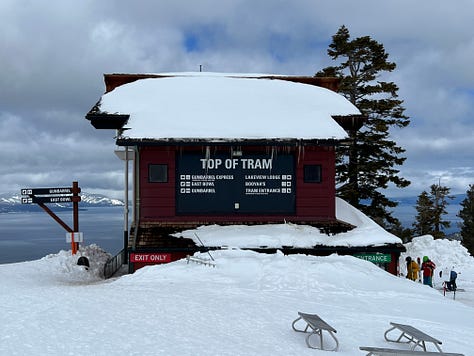


The Storm publishes year-round, and guarantees 100 articles per year. This is article 40/100 in 2023, and number 426 since launching on Oct. 13, 2019. Want to send feedback? Reply to this email and I will answer (unless you sound insane, or, more likely, I just get busy). You can also email skiing@substack.com.



